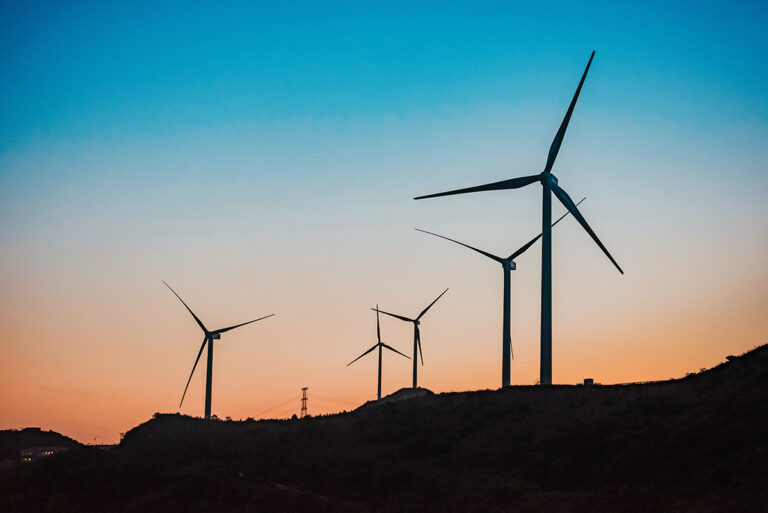Half of Indian wind farm carbon offsets went to projects that would have been built anyway, increasing emissions: new LSE study

Half (52%) of all carbon offsets awarded to Indian wind farms under the Clean Development Mechanism were given to projects that would very likely have been built anyway, finds new research published today. At this rate, carbon offseting under the Clean Development Mechanism (CDM) – the world’s largest offsetting programme – may have inadvertently added 6.1 billion tonnes of carbon dioxide emissions. That is the equivalent of running 20 one-gigawatt coal power plants for 50 years.
This is according to the working paper Do Carbon Offsets Offset Carbon? by a team of researchers from the Grantham Research Institute on Climate Change and the Environment and the Centre for Economic Performance at the London School of Economics and Political Science (LSE), Georgetown University, the University of Virginia and MINES ParisTech.
The research team studied carbon offsets in the CDM using newly constructed data on the locations and characteristics of 1,350 wind farms in India. The authors developed a new method for identifying ‘wasted’ subsidies, and used it to provide systematic evidence on the misallocation of carbon offsets. In their paper, they present a new framework for evaluating which projects should not receive carbon offsets.
For the researchers, a key question was whether carbon offsets have resulted in additional emissions reductions in unregulated markets. The new study suggests that, despite good intentions, the CDM may have allowed an increase in emissions by awarding a substantial number of offsets to projects that would very likely have been built anyway.
To identify wind farms that would have been built without the subsidy, the researchers look for unsubsidized projects, built in the same location and year, which were strictly less profitable. If less profitable projects were built without the subsidy then it follows that the subsidized projects did not need the subsidy. The emission reductions that these projects delivered would have been delivered anyway and so they do not offset the higher emissions granted to regulated firms under the program. The number of infra-marginal projects that are identified provides a lower bound on the degree of misallocation.
Raphael Calel, visiting fellow at LSE’s Grantham Research Institute on Climate Change and the Environment, said:
“The last decade has seen billions of carbon offsets issued to project developers around the world. But when offset programs support projects that would have been developed anyway, they not only waste the limited resources available to mitigate climate change, they also contribute to climate change by allowing global emissions to increase further. At least 52% of approved carbon offsets we looked at were allocated to projects that would very likely have been built anyway. This is a substantial misallocation of resources.
“We estimate that the Clean Development Mechanism has approved at least 28 million tonnes-worth of carbon offsets to infra-marginal projects in the Indian wind power sector. If we were to extrapolate this rate of misallocation to the CDM as a whole, it would mean that the program may have increased global carbon dioxide emissions by 6.1 billion tonnes – equivalent to running 20 one-gigawatt coal power plants for their entire 50-year lifespan.”
Part of the problem may lie in the way in which projects are approved for offsetting. The team found that 98% of the 666 CDM applications submitted to the UNFCCC Executive Board for Indian wind farms were approved. Even though the authorsidentify hundreds of projects that should likely have been denied, final approval appears to have been almost automatic.
For more information, please contact Anna Ford on a.ford1@lse.ac.uk or gri.media@lse.ac.uk.
Notes to editors:
- The Grantham Research Institute on Climate Change and the Environment was established in 2008 at the London School of Economics and Political Science. The Institute brings together international expertise on economics, as well as finance, geography, the environment, international development and political economy to establish a world-leading centre for policy-relevant research, teaching and training in climate change and the environment. It is funded by the Grantham Foundation for the Protection of the Environment, which also funds the Grantham Institute – Climate Change and the Environment at Imperial College London. www.lse.ac.uk/grantham/
- The Centre for Economic Performance (CEP) is an independent research centre based at the London School of Economics and Political Science. Its members are from the LSE and a wide range of universities within the UK and around the world. www.cep.lse.ac.uk . The Centre for Economic Performance is part-funded by the Economic and Social Research Council, part of UK Research and Innovation (UKRI) https://esrc.ukri.org/ https://www.ukri.org/

